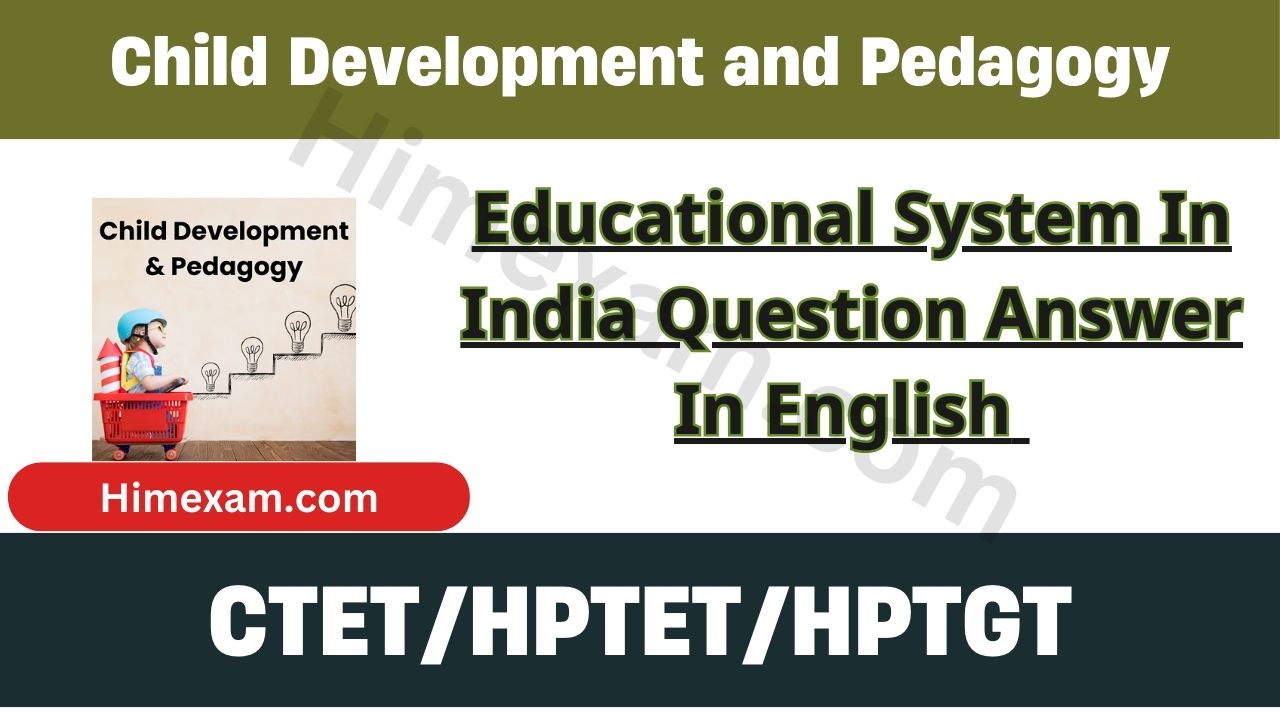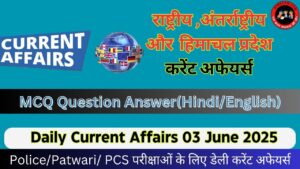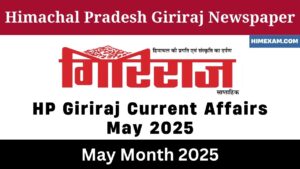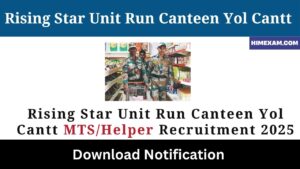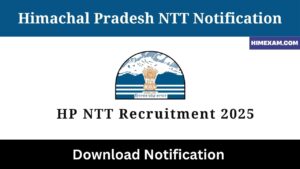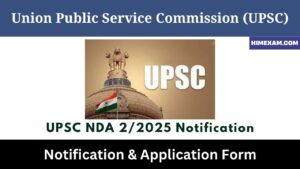Educational System In India Question Answer In English :-If you are preparing for any HPTET & HPTGT paper then this post is very important for you. This post containsStudy of Research and Statistics in Educational System In India Question Answer In English . Check our website daily to see other parts.
Educational System In India Question Answer In English For TET & TGT Exam:
1.Which of the following is called the Magna Carta of Indian education?
(1) Wood’s Manifesto (1854)
(2) Macaulay’s Prospectus (1835)
(3) Charter Act (1833)
(4) Charter Act (1813)
2. The Hunter Commission was constituted…
(1) In 1904
(2) In 1881
(3) In 1882
(4) In 1884
3. The Hunter Commission (1882) mainly presented its recommendations regarding which special education?
(1) Elementary Education
(2) Girl’s Education
(3) Muslim Education
(4) Special Education
4. A member of the Calcutta University Commission, 1919 was:
(1) Sir Syed Ahmed Khan
(2) Sir Ashutosh Mukherjee
(3) Dr. R.C. Majumdar
(4) Sir Yadunath Sarkar
5. When was the first academic conference for basic education held?
(1) In 1936 AD
(2) In 1937 AD
(3) In 1938 AD
(4) In 1939 AD
6. When did the University Commission working under the chairmanship of Dr. Radhakrishnan present its report?
(1) In 1948 AD
(2) In 1949 AD
(3) In 1950 AD
(4) In 1951 AD
7. Recommended work experience in secondary level course:
(1) By Narendra Dev Committee (1953)
(2) By the Kothari Commission (1964)
(3) By the Mudaliar Commission (1952)
(4) By Radhakrishnan Commission (1948)
8. The first education minister of independent India was:
(1) Dr. Rajendra Prasad
(2) Sardar Vallabhbhai Patel
(3) Abul Kalam Azad
(4) Dr. S. Radhakrishnan
9. What is NUEPA mainly related to?
(1) The academic supervisor
(2) The academic support
(3) Educational planning
(4) Educational evaluation
10. Yashpal Committee Report (1992) is related to
(1) ICT in teacher development
(2) Education without burden
(3) Education by Broadcasting
(4) None of the above
11. According to NCF-2005, the role of a teacher is that of a ………….
(1) Leader
(2) Evaluator
(3) Instructor
(4) All of the above
12. When was the National Council of Educational Research and Training Institute established?
(1) 1961
(2) 1962
(3) 1963
(4) 1964
13. Where has the country’s first Open University been established?
(1) Hyderabad
(2) Secunderabad
(3) Ahmedabad
(4) Aurangabad
14. In which year the National Curriculum Framework was implemented?
(1) 2001
(2) 2003
(3) 2005
(4) 2007
15. In which year the National Literacy Mission was launched?
(1) 1985
(2) 1987
(3) 1988
(4) 1989
16. Which of the following commissions recommended the Three language formula?
(1) Kothari Commission
(2) Mudaliar Commission
(3) Hunter Commission
(4) Radhakrishnan Commission
17. Under which of the following constitutional amendment was the fundamental right of education made?
(1) 84th
(2) 86th
(3) 88th
(4) 90th
18. The title of the report presented by the Kothari Commission on the subject of education was-
(1) Education and National Development
(2) Learning ‘to be’
(3) Diversification of education
(4) Education for all
19. Which of the following is the correct sequence of curriculum development?
1. Evaluation of Objectives
2. Formulation of Objectives
3. Applying teaching-learning experiences
4. Selection of Teaching-Learning Experience
(1) 2, 1, 3, 4
(2) 2, 3, 4, 1
(3) 2, 1, 4, 3
(4) 2, 4, 3, 1
20. Modern Education ………….
1. Is developing interactions.
2. Presents as many principles and practical facts as possible.
(1) 1 only
(2) 2 only
(3) Both 1 and 2
(4) Neither 1 nor 2
21. Which of the following statement(s) is/are correct regarding the teaching of History at the upper primary level as per the National Curriculum Framework (NCF), 2005?
1. In the upper primary stage, history should focus on development in India.
2. At the upper primary level, history will focus on developments in different parts of India as well as developments or programs in other parts of the world.
3. At the upper primary level, history will only take into account developments in different parts of India.
(1) 1, 2 and 3
(2) 3 only
(3) Only 2
(4) only 1
22. Which of the following are important barriers to equality of opportunity in education?
(a) Difference in the economic status of the learner
(b) Gender inequality
(c) Universal school system
(d) Difference in standards of educational institutions
Code:
(1) (a) and (d)
(2) (a), (b) and
(c) (3) (a) (b) and (d)
(4) (a), (b), (c) and (d)
23. Individual Education Scheme (IES) is not based on which of the following ideas?
(1) Present characteristics of the learner
(2) Personal goals to be achieved
(3) Use of Co-operative Learning Strategy
(4) To categorize students on the basis of merit grouping
24. Effective decentralization in educational reforms will be possible only
A. When the participation of Block and Cluster Reference Centres increases.
B. There should be a local reference person available.
C. Teachers should also have resources and relevant material.
Choose the correct answer:
(1) A and B
(2) B and C
(3) A and C
(4) A, B and C
25.The purpose of the mid-day meal is related to:
(1) Registration-enrolment in the school
(2) Regular nutrition in school
(3) Regular teaching in school
(4) All of the above
More Pages:-
हेलो दोस्तों ,आपका हमारी वेबसाइट Himexam.com पर स्वागत है। जैसा की आपको पता है हमारी वेबसाइट Himexam.com आपको समय-समय पर सभी HP Govt Jobs & All India Govt Jobs की Notifications प्रदान करवाती है। साथ ही साथ Himachal Pradesh Exam Previous Paper और Himachal Pradesh GK ,Himachal Pradesh & National +International Current Affairs के सभी नोट्स मुफ्त उपलब्ध करवाते है। हमारी वेबसाइट के अलग अलग प्लेटफार्म पर pages & Group बने है जैसे की facebook ,Telegram और Instagram .. अगर आप हिमाचल के किसी भी पेपर की तैयारी कर रहे हो तो जल्दी से इन groups के साथ जुड़ जाएं इनके लिंक नीचे table में दिए गए है।
Join Us:-
| Like Our Facebook Page | Click here |
| Join Us oN Telegram | Click here |
| Join Us On Instagram | Click Here |

